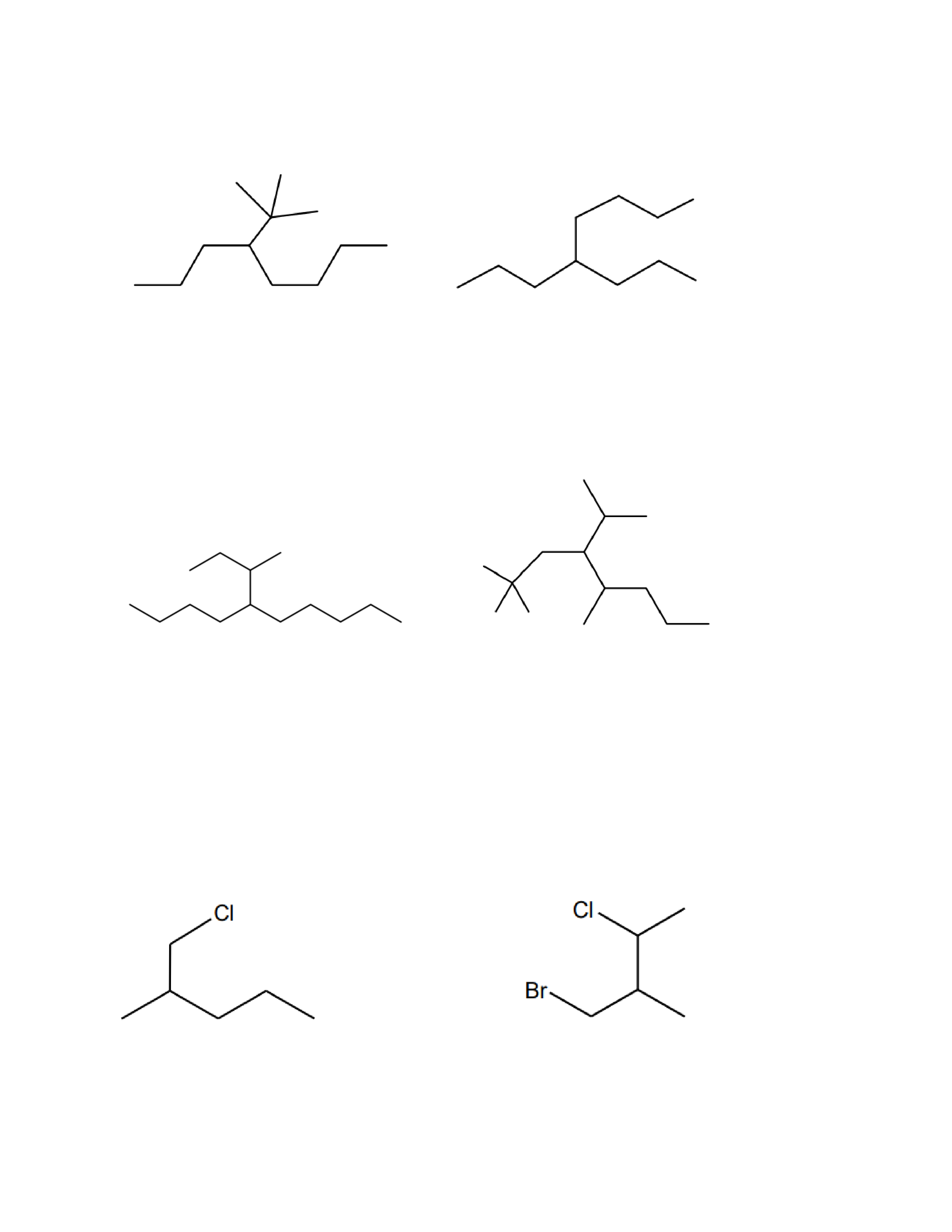(Solved): Step 1. Find the longest continuous carbon chain. Determine the root name for this parent chain ...
•Step 1. Find the longest continuous carbon chain. Determine the root name for this parent chain. (When there are two longest chains of equal length, use the chain with the greater number of substituents.) •Step 2. Number the chain in the direction such that the position number of the first substituent is the smaller number. If the first substituents from either end have the same number, then number so that the second substituent has the smaller number, etc. •Step 3. Determine the name and position number of each substituent. •Step 4. If the same substituent occurs more than once, the location of each point on which the substituent occurs is given. In addition, the number of times the substituent group occurs is indicated by a prefix (di, tri, tetra, penta, hexa, etc.). Use hyphens to separate the substituents and their number. When multiple numbers are used for the same substituents, use a comma in between. Step 5. If there are two or more different substituents they are listed in alphabetical order using the base name (ignore the prefixes). The only prefix which is used when putting the substituents in alphabetical order is iso as in isopropyl or isobutyl. The prefixes sec- and tert- are not used in determining alphabetical order except when compared with each other. Step 6. If chains of equal length are competing for selection as the parent chain, then the choice goes in series to: a) the chain which has the greatest number of side chains. b) the chain whose substituents have the lowest- numbers. c) the chain having the greatest number of carbon atoms in the smaller side chain. d)the chain having the least branched side chains.
